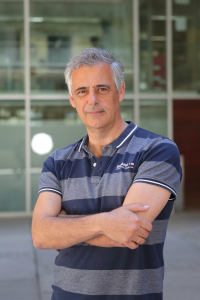 NEWS
NEWS
"It is important to invest in medicine and science"
Interview with Dr. Luis Serrano, Director of Centre for Genomic Regulation (CRG), Barcelona. CRG is a biomedical research institute with programmes on Bioinformatics and Genomics, Cell and Developmental Biology, Gene Regulation, Stem Cells, and Cancer and Systems Biology. (interview belonging to the LifeTime COVID-19 Interviews series, published on the LifeTime website)
The current Covid19 pandemic has brought new challenges to the institute, which is now centrally involved in testing for suspected infections with SARS-CoV-2. What are the biggest challenges in taking on this new task?
Setting up a pipeline that involves reprogramming the robots we have, establishing the safety procedures for the personnel involved, coordinating with the health authorities and agree on how to collect the samples and how to send back the results. Essentially establishing a safe, and reliable pipeline.
How did you manage to change a research institute into a testing centre?
We did not change the nature of the institute, we transformed an S2 room into a place for RNA extraction and a big seminar room adjacent to it as a storage place for reagents, printing the barcodes, reading the barcodes, etc. We have decreased by 50% the capacity of the genomics facility in order to use the personnel and robots for preparing the PCR plates and doing the RT-PCR. The rest of the institute can continue doing business as usual within the current government restrictions.
What technologies are you using?
For RNA extraction, we have two robots, one using columns and the other magnetic beads. We have a robot for dispensing lysis buffer in tubes that are sent to the hospitals and another to convert the 96 well plates into 384plates. Finally, we have six quantitative PCR machines and a printer that can print several thousand labels with barcodes per day.
What does it mean for the CRG and to you personally to be so centrally involved in the fight against Covid-19?
It is quite exciting and rewarding. Firstly and more importantly, we hope to contribute to stopping the spread of the virus by doing massive tests on the population. Secondly, we are showing the public the importance of having research institutes and trained personal.
When the CRG will return to its normal activities, how will your institute contribute to advancing our knowledge on this outbreak and potential future epidemics?
We have several ongoing or planned projects on the coronavirus. We will keep all patient samples frozen to sequence the virus and thanks to the barcoding we could access to blood samples of the patients and do sequencing so we will be able to see if there are special virulent versions of the virus, as well as the importance of human variability in virus susceptibility. We are also expressing viral proteins in human cells properly glycosylated to be used for screening people that have passed the disease. Moreover, we look forward to harnessing the expertise of our researchers in single-cell analyses (e.g. Holger Heyn) and bioinformatics (eg. Marc A. Marti Renom) to implement the LifeTime approach with our European partners.
How do you think this pandemic will change the world of science?
Everyone claims that this pandemic will change our world and I imagine it could have an impact on science. At least, in my case, I see that we could live with much less traveling and more conferences. I hope that the European politicians will realize how important it is to invest in medicine and science, not only for finding new therapies but to be ready with equipment, resources, and trained personnel to fight future new viral or bacterial outbreaks.

